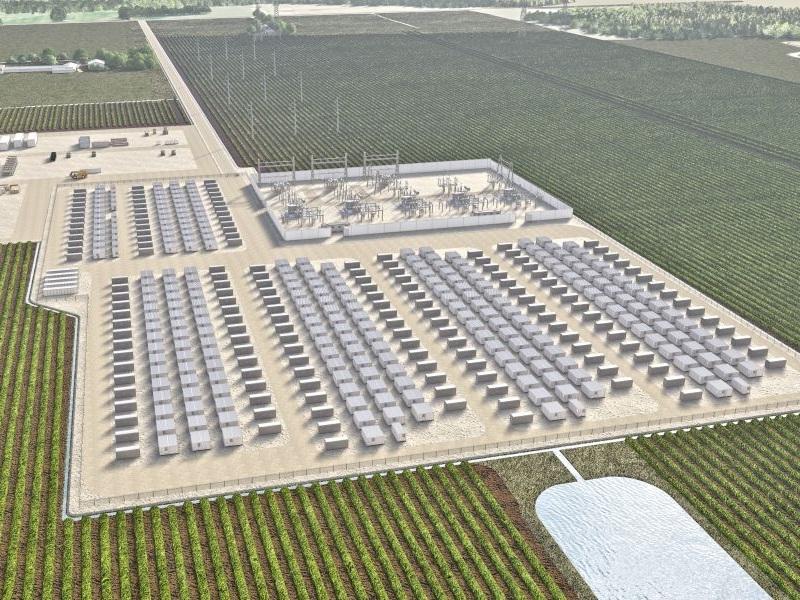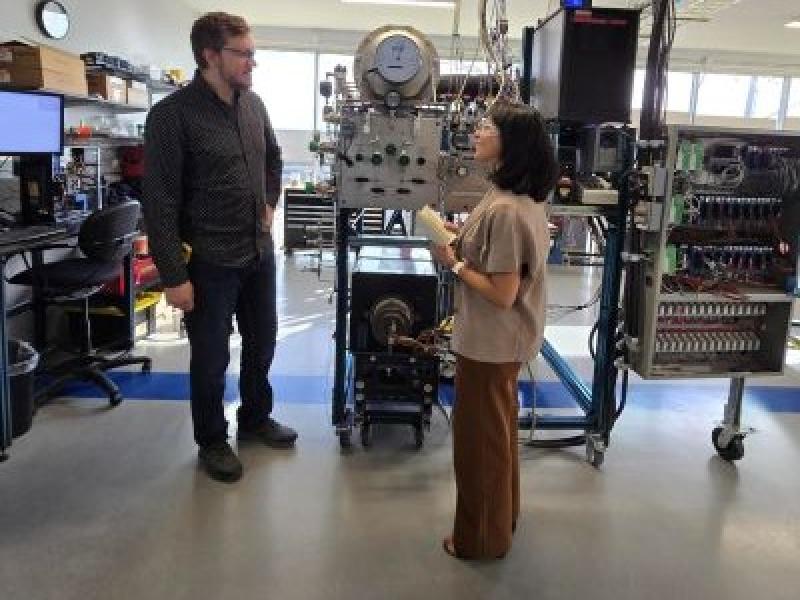
The start of construction on Canada’s largest battery energy storage system south of Ottawa is just one example of Ontario’s demand for grid reliability and resilience, a backbone of the clean energy transition.
Last week, work on the Skyview 2 Battery Energy Storage System was announced. The project in the Township of Edwardsburgh Cardinal is designed to provide up to 411 megawatts (MW) of capacity, or over 1,560 megawatt-hours. Its developer is Toronto-based Potentia Renewables Inc.
Scheduled to be operational by 2027, the facility is expected to hold enough energy to power approximately 400,000 homes for four hours.
The Independent Electricity System Operator (IESO), the province’s power system manager, expects almost 3,000 MW of installed energy storage capacity in Ontario’s grid by 2028.
Rising electricity demand and increasing renewable energy generation that requires reliable back-ups are driving this projection, the IESO says.
“We see storage, especially combined with renewables, as being an important part of the supply mix to help us maintain reliability,” Stephen Nusbaum, the IESO’s senior manager of resource integration, said in an interview with Sustainable Biz Canada.
Why energy storage is in high demand
A major force behind the increase of energy storage systems is the predicted spike in electricity demand. In 2024, the IESO forecasted electricity consumption to rise 75 per cent by 2050, going from 151 terawatt-hours in 2025 to 263 terawatt-hours in 2050.
Ontario’s rising population, electrification of the economy, and a growing industrial sector fuelled by electric vehicle manufacturing and data centres are key factors.
To meet this hunger for energy, the provincial government announced large energy procurements. In December 2024, it announced a procurement of up to 7,500 MW. The technology-agnostic search includes wind and solar, which are intermittent sources that need energy storage to hold excess power and release it when needed.
The assets function as supply and demand, the IESO said in a backgrounder document from February 2023. Energy storage can draw electricity when demand and prices are low, then release it onto the grid when demand peaks.
At periods of low demand the energy generation is usually low-carbon sources, Nusbaum said, such as hydro, nuclear and renewables.
Since 2023, the IESO began to make its first long-term procurements of energy storage systems. The facilities “will be an important step toward the transition to a non-emitting supply mix,” the IESO said, “and will support reliability as the grid powers broader electrification efforts across other sectors of the economy.”
Ontario's current energy storage capacity
In Ontario, approximately 430 MW of energy storage capacity is currently in commercial operations, Nusbaum said. Those include:
- Northland Power Inc.’s 250 MW Oneida Energy Storage Project in Jarvis;
- the 120 MW York Battery Energy Storage System in the Township of King; and
- the 50 MW Goreway Battery Energy Storage System in Brampton.
There are also private battery projects the IESO does not have complete visibility into called behind-the-meter, Nusbaum said. Most are typically used by large industrial organizations. Some exceed one MW, he said, and others are “substantially larger.” An example is two such systems in Shell New Energies’ facilities in Sarnia and Brockville, developed by Convergent.
Such assets help the industrial organizations manage energy costs and participate in the IESO’s demand response program, Nusbaum said.
Other Ontario storage projects

Battery energy storage systems will “be important to help meet our longer-term system needs,” Nusbaum said about the IESO.
Alongside the announcement of Skyview 2 was the 390 MW Grey Owl Storage project to be located in the Owen Sound region. It has since been updated to a 400 MW project named Tara. The developer is Acton, Ont.-based Shift Solar Inc., a subsidiary of French renewables company Neoen.
However, it has hit a considerable roadblock with its zoning plan being unanimously rejected by the local government in July, according to the Owen Sound Sun Times. Residents raised concerns over how the project could impact the surrounding area and local drinking water supplies.
Elsewhere, Quebec-based Boralex has plans to develop two energy storage assets in Ontario:
- the 300 MW Hagersville project; and
- the 80 MW Tilbury Battery Storage project.
The high demand for energy storage in Ontario has extended to production of batteries. NextStar Energy, a joint venture between LG Energy and Stellantis, shifted production at its Windsor battery facility from EV batteries to churning out those for storage systems, intended for commercial and grid-scale energy platforms.
To have “more visibility into the stage of charge,” and more efficient participation opportunities for energy storage projects in the market, the IESO is running a storage integration project, Nusbaum said. The first model is expected to be released in the next two to three years.
The IESO is aiming to have longer-duration energy storage projects. Most current procurements top out at the four-hour range, but the power system manager has started to procure projects that have between eight to 12 hours of capacity.
“We need to make sure we have the energy available to charge them and that they have sufficient duration of discharge capabilities,” Nusbaum said, “and actually meet the needs of what we’re procuring them for.”










